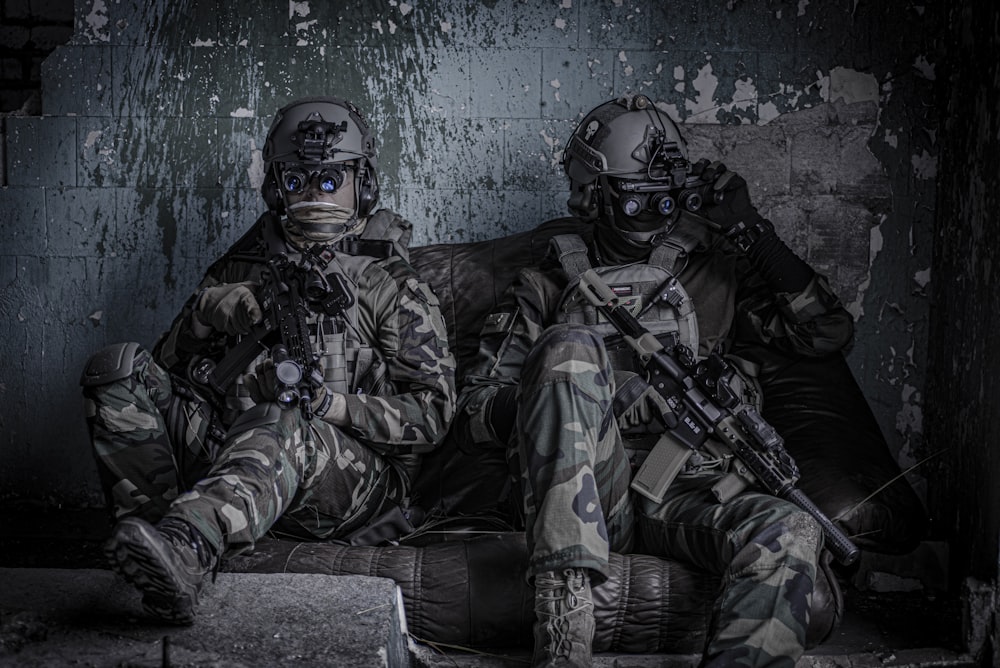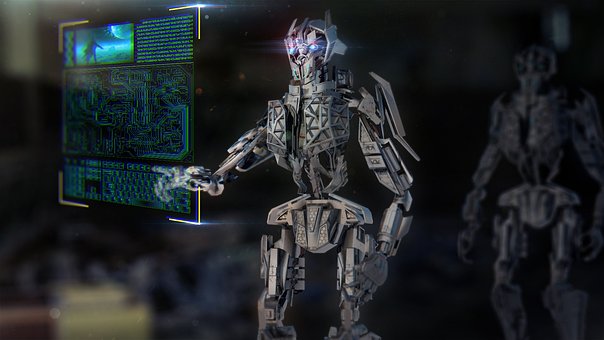
With the advancing Machine Learning (ML) and Artificial Intelligence (AI), it has become technologically possible to make a decision–making robot. But, until today, the images that have settled in our imaginations from science fiction movies have begun to turn into the new reality of defense.

Military technologists say that it has become technologically possible to make a decision–making Robots with advancing Machine Learning (ML) and Artificial Intelligence (AI). The images that have settled in our imaginations from science fiction movies to date have come true. This new generation of mechanical soldiers will have the capacity to decide who to target and what tactics to develop without the need for a human controller. In addition, other technologies, such as facial recognition and decision–making algorithms, are becoming more powerful. When these technologies are brought together, the perfect soldiers will become even easier to implement.
It was known that a wave of revolution was approaching when the USA tested its first robot soldiers called “Swords” in the Iraqi field in 2005. Still, the robotic exercise by the USA and the UK in 2018 at the Grafenwoehr training ground in Germany offered more precise information on how the army used robot soldiers. Remote–controlled armored soldiers cleared explosives. They filled a trench, while an uncrewed armored vehicle created a white smokescreen to protect them. These technologies because of their potential to reduce costs, increase capabilities, and most importantly, put fewer people at risk and save lives. According to the research conducted by the American company Markets and Markets, the global Military Robot market generated a volume of 14.5 billion dollars in 2020 and is expected to reach 24.2 billion dollars with an annual growth of 10.7 percent by 2025. The market will grow so much due to the increase in the use of Robots in many areas, from chemical, biological, radiological, and nuclear attacks to mine countermeasures; all areas that will cause significant harm to humans are shifted to robotics.
The Drones used in the bombings and the Robots involved in the detonation of land mines save the lives of many soldiers today. Still, the new generation of robot soldiers equipped with ultra–modern technologies have not yet been put on the field. However, the trials and testing phases of this new generation of soldiers are progressing rapidly; They are even made ready for use in many countries today.
In addition, the Pentagon continues its work on unmanned robotic weapons that can rapidly attack any part of the world within an hour by forming a global network. In fact, according to former USA Secretary of Defense Robert Gates, the “Global Instant Strike (PGS) Program” developed by the air force is already in use.
The US Department of Defense (DoD) has dramatically increased its Robotic and Artificial Intelligence (AI)–based investments. It is even working to transform the products developed in this field into systems with a smaller structure.
The fact that rapid developments in Artificial Intelligence (AI) and Robotics will make smart wars possible in the coming years has accelerated the process of including these technologies in traditional war networks by those who produce technology and products in the defense industry. While many established defense contractors have treated Artificial Intelligence (AI) and Robotics as side markets, they now realize that not centered it would be a threat to their long–term existence, as these two technologies have begun to take competition in a different direction at all levels of the industry. Although the impact of the military revolution from Artificial Intelligence (AI) and Robotics is ten years or more away, investing in emerging segments now and determining strategic changes are of great importance for the war.
For example, countries like China and Russia have developed “blocking” technologies such as long–range air defense systems and precision attack weapons that prevent USA military forces from operating in a contentious area. In addition, the same countries and many more are actively developing Robotic technologies to close the gap or become the new leader.
THE ARMY OF THE FUTURE WILL HAVE CYBORGS
On the other hand, future wars will not be fought between robots alone. Hybrid soldiers will also be a part of the future of defense, and work is being carried out in this area. Half–human, half–robot soldiers, or Cyborgs as they are preferred, are one of the essential topics of the technological future of armies. One of the fundamental predictions is that Cyborg soldiers, who define people whose bodies are developed with robotic technologies, will have a “game–changer” effect on defense technologies. Many countries, especially the United States, have already put this hybrid technology on their radar.
In addition, China and the USA themselves carry out such studies intensively. For example, former US President Barack Obama, who appeared before the cameras to announce a new initiative in 2014, told reporters: “I’m here to announce that we’re building Iron Man.” The speech caused laughter, but the president was serious.
The metallic suit called TALOS (Tactical Assault Light Operator Suit), developed within the project’s scope, aims to increase soldiers’ strength, durability, and ergonomics. This exoskeleton will consist of physiological and biological sensors. These actuators act like muscles to power the suit, processors and computers, a helmet with a digital display, and other communication systems. Projects similar to TALOS (Tactical Assault Light Operator Suit) are also being developed in European countries, China and Russia.
The robotic exoskeleton, named Military Marching Assistant (ASIA), will assist the soldier in movements such as running, walking, climbing, and jumping. In addition, it will lighten the load carried by the personnel and allow more ammunition to be taken.
Although the Iron Man project has not yet concluded in the USA, the country’s work in half–human, half–robot soldiers continues.
Although Cyborg Technology includes some methods such as DNA manipulation and gene modification, and their moral and ethical side constitutes a significant area of discussion, they are too advanced to be prevented from taking part in future defense.
The future wars continue to take shape with each passing day through developing technologies. The development of Robotic weapons, the diversification of the usage areas of uncrewed vehicles, the support of military technologies with Artificial Intelligence (AI) and Augmented Reality (AR) are pregnant with exciting developments.






